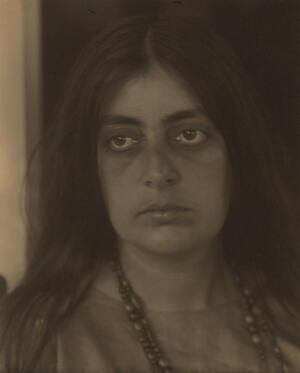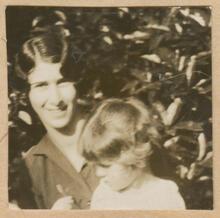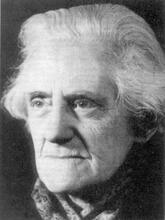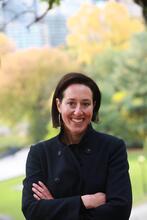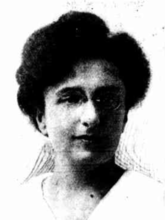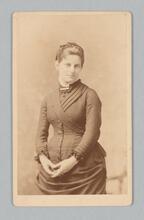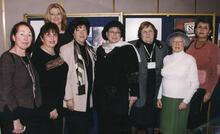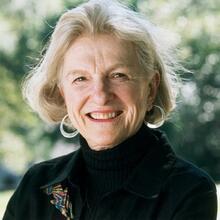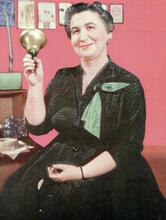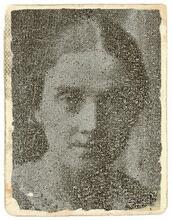Margaret Naumburg
By creating her own school and her own system of education based on principles of psychoanalysis, Margaret Naumburg laid the groundwork for the new discipline of art therapy. After opening the first Montessori school in the United States, using space at the Henry Street Settlement House in New York, Naumburg left to create the Walden School, an experimental model based on “developing children’s capacities” rather than the “accumulation of knowledge.” She eventually resigned as the school’s director and began writing about her experiences there, followed by a number of books on her ongoing research into art therapy. Naumburg went on to create the first art therapy courses at New York University and the New School for Social Research, where she taught until her retirement.
Up to the present time, education has missed the real significance of the child’s behavior by treating surface actions as isolated conditions. Having failed to recognize the true sources of behavior, it has been unable effectively to correct and guide the impulses of human growth.... The new advances in psychology, however, provide a key to the real understanding of what makes a child tick.
This is a quote from Margaret Naumburg, founder of the Walden School and author of many works on psychology and art therapy. She was born on May 14, 1890, in New York City to German-born Max Naumburg, a successful clothing manufacturer, and American-born Theresa (Kahnweiler) Naumburg. Margaret was the second daughter in a family with three girls and one boy. Although raised in a Jewish home and interested in Jewish mysticism, she identified more closely with the ideologies of Ethical Culture. This organized intellectual and spiritual movement did not require a formal conversion for participation and attracted other German Jews throughout the United States. Naumburg’s ideas alienated her from her parents.
Education and Montessori training
While a student at Barnard College, Naumburg roomed with Evelyn Dewey, took courses with John Dewey, was the president of the Socialist Club, and counted Walter Lippmann “as one of her closest men friends.” Shortly after graduation, she left for Europe, where she studied economics at the London School of Economics, learned the Dalcroze method in music under Alys Bently, and studied child education with Maria Montessori.
Upon her return to New York in 1914, Naumburg settled into the new American bohemian community of Greenwich Village, where she openly lived with Waldo Frank, author of novels and cultural criticism. Frank, a graduate of Yale University, was the son of a successful lawyer. Both Naumburg and Frank became consumed by postimpressionist art and reality and dedicated their lives to reforming society. Naumburg’s desire for public recognition and for respect in the field of child development and education eventually led to her marriage to Frank in 1916.
New philosophies: The Walden School
In 1914, Naumburg opened the first Montessori school in the United States. It occupied space at the Henry Street Settlement House. This experience gave Naumburg the opportunity to develop her own educational philosophies, which early on began to conflict with Montessori methods. After only one year, she left the school to establish her own institution, the Walden School.
Naumburg’s Walden School opened in a rented room at the Leete School on East 60th Street. It began as a nursery school for two-year-olds, and a new level was added each year. In 1928, the first graduating class included the children of a famous analyst, a university professor, an art teacher, and a well-known writer and suffragist. The school was perceived as part of a movement to “free the arts.” It was praised highly in the press and had strong support from the intellectual community. In 1915, the New York Tribune described the “very interesting and remarkable” new experiment. The intellectual and cultural atmosphere was further enhanced by the presence of Hendrik Van Loon, Lewis Mumford, and Ernest Bloch, who were invited by Naumburg to work with the students.
Influenced by Freud’s theories, the Walden School used psychoanalysis as the base of its educational philosophies. The emphasis at the Walden School was on “the development of children’s capacities,” not the “accumulation of knowledge.” The first catalog states the school’s aim “to develop individuality and initiative” and, through music and art, to stimulate the child’s creative activity. The art program, developed by Naumburg’s sister Florence Cane, was greatly influenced by Jung.
Writing, research, and art therapy
In 1922, Naumburg gave birth to a son, Thomas. By 1924, the marriage had dissolved, and, soon after, Naumburg resigned as director of the Walden School. By the late 1920s, she found a new career in writing. In 1928, her book The Child and the World, based on her experiences at Walden, was published.
In the 1930s, Naumburg began her work and research in art therapy. While working with children at the New York Psychiatric Institute, she developed her method of diagnosis and therapy by teaching free art expression. She wrote about her philosophies and methods in four texts: An Introduction to Art Therapy, Schizophrenic Art, Psychoneurotic Art, and Dynamically Oriented Art Therapy. In the 1940s, Naumburg pursued training in psychiatry at Bellevue Hospital. By the late 1950s, she was lecturing widely and developed the first art therapy courses at the New School for Social Research and at New York University. Naumburg remained at the New School for Social Research until her retirement in 1969.
Naumburg received the Ernest Kris Prize in 1973 and was a fellow of the American Orthopsychiatric Association and the American Psychological Association.
Margaret Naumburg died on February 26, 1983, at age ninety-two.
Selected Works by Margaret Naumburg
The Child and the World. San Diego: Harcourt, 1928.
Dynamically Oriented Art Therapy: Its Principles and Practices. New York: Grune & Stratton, 1966.
An Introduction to Art Therapy. New York: Teachers College Press, 1973.
Psychoneurotic Art. New York: Grune & Stratton, 1953.
Schizophrenic Art. New York: Grune & Stratton, 1953.
American Journal of Art Therapy 22 (October 1982).
EJ; Frank, Dr. Thomas, and Kate Frank. Conversation with author, February 1995.
Karier, Clarence J. Scientists of the Mind (1986).
Obituary. NYTimes, March 6, 1983.
UJE.
The Walden Story: Forty Years of Living Education (1954).

